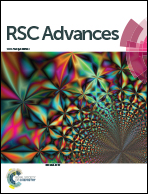Extensive counter-ion interactions seen at the surface of subtilisin in an aqueous medium†
Abstract
The extent of protein and counter-ion interactions in solution is still far from being fully described and understood. In low dielectric media there is documented evidence that counter-ions do bind and affect enzymatic activity. However, published crystal structures of macromolecules of biological interest in aqueous solution often do not report the presence of any counter-ions on the surface. The extent of counter-ion interactions within subtilisin in an aqueous medium has been investigated crystallographically using CsCl soak and X-ray wavelength optimised anomalous diffraction at the Cs K-edge. Ten Cs+, as well as six Cl− sites, have been clearly identified, revealing that in aqueous salt solutions ions can bind at defined points around the protein surface. The counter-ions do not generally interact with formal charges on the protein; formally neutral oxygens, mostly backbone carbonyls, mostly coordinate the Cs+ ions. The Cl− ion sites are also found likely to be near positive charges on the protein surface. The presence of counter-ions substantially changes the protein surface electrical charge. The surface charge distribution on a protein is commonly discussed in relation to enzyme function. The correct identification of counter-ions associated with a protein surface is necessary for a proper understanding of an enzyme's function.



 Please wait while we load your content...
Please wait while we load your content...